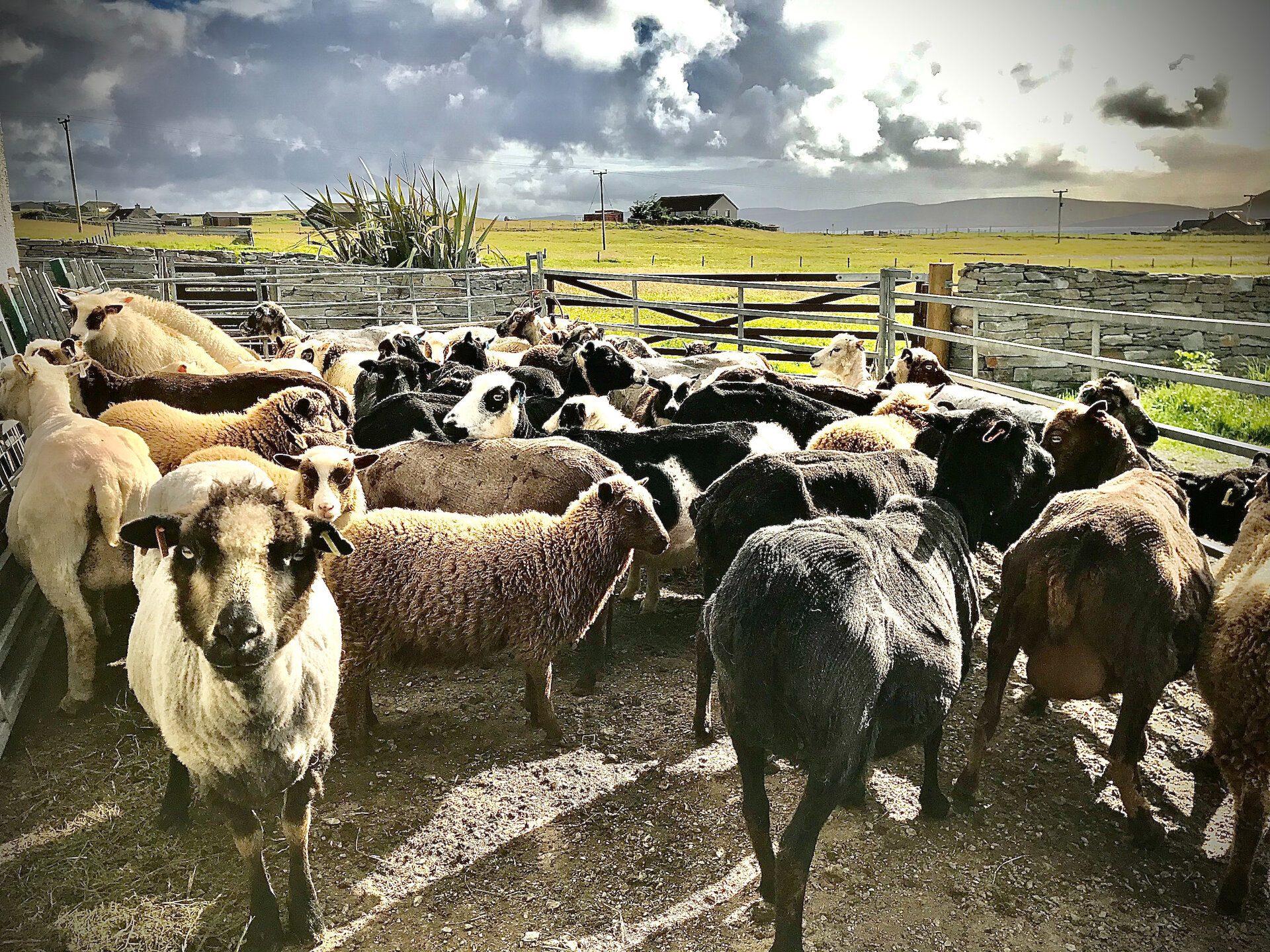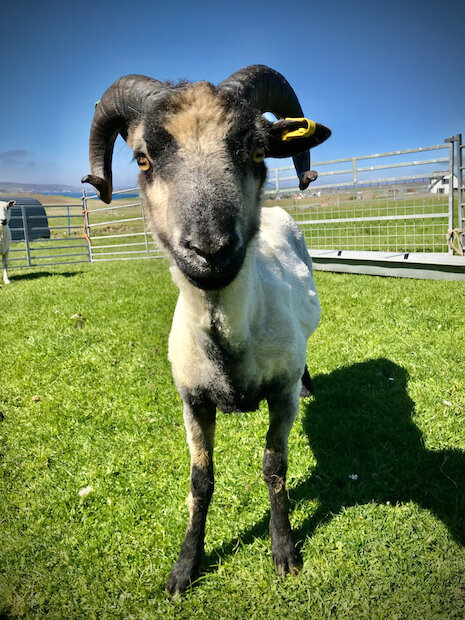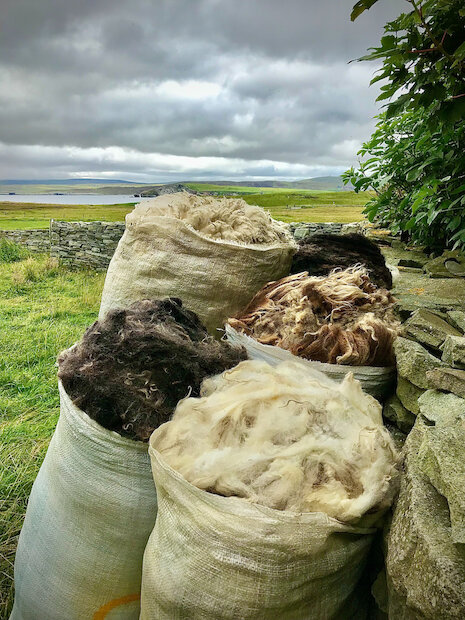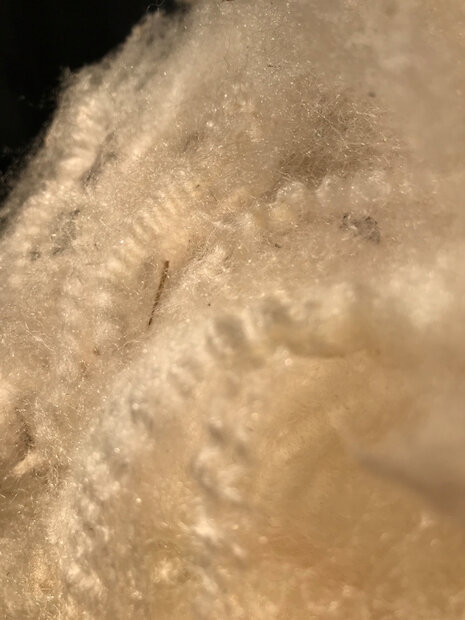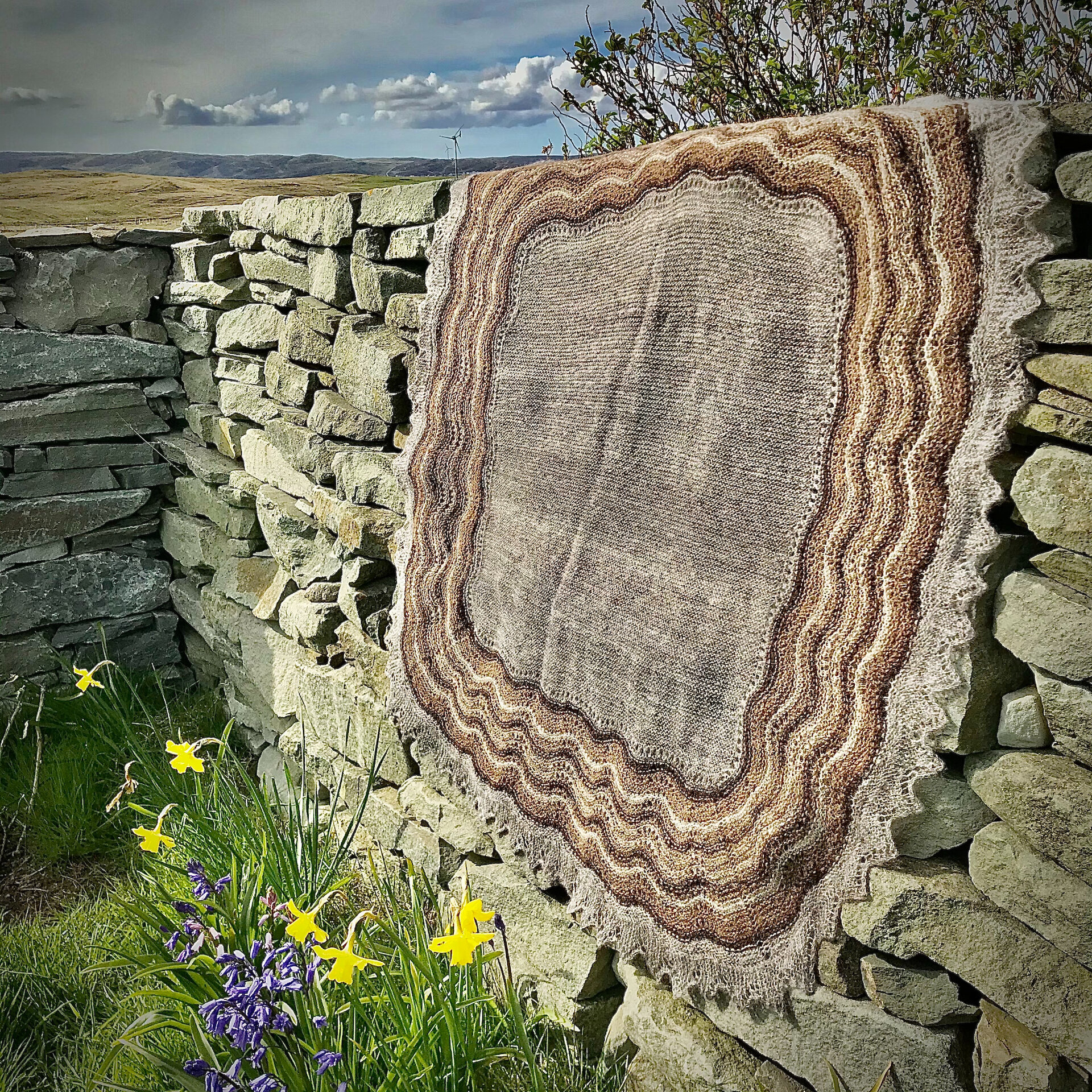From a contemporary Shetland perspective, the development of wadmal (derived from the Old Norse ‘vaðmál; “cloth measure”), a coarse, thick and often undyed woollen fabric for outer garments and working clothes became synonymous across the North Atlantic region from the medieval period into the eighteenth century. Wadmal was used as a means of payment, rental and exchange and woven on a warp-weighted loom throughout areas of Scandinavian influence.
The discovery of loom weights on archaeological excavations across Shetland indicates the importance of sheep as domesticated livestock and textile production. These loom weights were often made of steatite, a soft naturally-occurring rock referred to by the dialect term kleber. That usage derives from the Old Norse klébergi, meaning loom weight stone, and is referenced in the Shetland landscape by places such as Clibberswick, in Unst and Kleber Geo, at Fethaland, Northmavine.
As a primitive breed, having evolved to not just survive but thrive on poorer quality hill grazing, Shetland sheep would naturally shed their fleece each year, leaving the new growth underneath.
Before the advent of electrical motors, handpieces, drive shafts, cutters, combs, and all of the accoutrements of 21st century shearing, Shetland sheep would be gathered in stone crøs and rooed by hand, separating the old and new growth of fleece and providing the best wool for hand- spinning.
